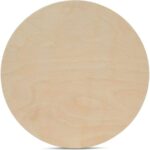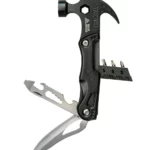
I. Choosing the Right Hobby to Monetize
II. Building Your Brand and Online Presence
III. Setting Up an Online Store or Selling Platform
IV. Marketing and Promoting Your Creations
So, you’ve finally decided to turn your passion into a side hustle and make some extra cash from your hobby – that’s awesome! But before you start counting the dollars rolling in, it’s important to choose the right hobby to monetize. After all, you want to make sure you’re investing your time and energy into something that you truly enjoy and that has the potential to bring in some serious moolah.
First things first, take a moment to think about what you love doing in your spare time. Do you enjoy painting, crafting, baking, or maybe even making jewelry? Whatever it is that brings you joy and fulfillment, that’s what you should focus on. Remember, your hobby should be something that you’re passionate about and that you can see yourself doing for hours on end.
Next, consider the market demand for your chosen hobby. Is there a niche that you can tap into or a unique twist that you can add to make your creations stand out? It’s important to do some research and see what’s hot in the market right now. By staying on top of trends and finding ways to differentiate yourself from the competition, you’ll be able to attract more customers and drive sales.
Another crucial factor to consider is the scalability of your hobby. Sure, selling handmade soaps to your friends and family might be fun, but can you realistically turn it into a sustainable business? Think about whether your hobby has the potential to grow and evolve over time. Are there opportunities to expand your product line, reach new markets, or collaborate with other businesses? By setting yourself up for long-term success, you’ll be able to turn your hobby into a profitable venture.
Lastly, don’t forget to consider your skills and expertise in your chosen hobby. Are you a master baker, a skilled seamstress, or a talented photographer? Leveraging your unique talents and strengths will not only help you create high-quality products but also build a loyal customer base. Remember, customers are willing to pay a premium for products that are well-crafted and reflect your passion and dedication.
In conclusion, choosing the right hobby to monetize is the first step towards turning your passion into profit. By selecting a hobby that you love, has market demand, scalability, and leverages your skills, you’ll be on your way to building a successful side hustle. So go ahead, follow your heart, and start monetizing your hobby today!
Choosing the Right Hobby to Monetize
So, you’ve finally decided to turn your passion into a side hustle and make some extra cash from your hobby – that’s awesome! But before you start counting the dollars rolling in, it’s important to choose the right hobby to monetize. After all, you want to make sure you’re investing your time and energy into something that you truly enjoy and that has the potential to bring in some serious moolah.
- Consider what you love doing in your spare time
- Think about the market demand for your hobby
- Assess the scalability of your hobby
- Take into account your skills and expertise
So, you’ve decided to turn your hobby into a source of income – that’s fantastic! Now, the next step is to build your brand and establish your online presence to reach a wider audience and make sales. It may seem overwhelming at first, but don’t worry, I’ve got you covered with some tips and tricks to help you get started.
First things first, let’s talk about branding. Your brand is essentially your identity as a creator and what sets you apart from the competition. Think about what makes your creations unique and special – is it your style, your materials, or your story? Use that to create a cohesive brand image that resonates with your target audience.
Once you’ve nailed down your brand, the next step is to establish your online presence. Start by creating a website or setting up social media profiles dedicated to your hobby-turned-business. Your website should showcase your creations, tell your story, and provide a seamless shopping experience for your customers. Social media platforms like Instagram and Facebook are great for engaging with your audience, sharing behind-the-scenes content, and driving traffic to your online store.
Don’t forget about the power of networking and collaborations. Partnering with influencers, other creators, or online marketplaces can help you reach a larger audience and grow your brand. Look for opportunities to collaborate with like-minded individuals or businesses that align with your brand values and aesthetic.
When it comes to building your brand and online presence, consistency is key. Make sure your branding elements – from your logo to your color palette to your messaging – are cohesive across all platforms. This will help establish brand recognition and make your creations more memorable to your audience.
And finally, don’t be afraid to show the person behind the brand. Share your story, your creative process, and your passion with your audience. People love to connect with the person behind the creations, so don’t be afraid to let your personality shine through in your content.
Building your brand and online presence is an ongoing process, so don’t be discouraged if you don’t see immediate results. Keep experimenting, learning, and evolving your strategy to find what works best for you and your audience. With dedication and perseverance, you’ll be well on your way to turning your hobby into a successful business. Good luck!
**Key Takeaways:**
– Define your brand identity and what sets you apart from the competition.
– Establish a strong online presence through a website and social media profiles.
– Collaborate with others to reach a wider audience and grow your brand.
– Stay consistent with your branding elements across all platforms.
– Show the person behind the brand to connect with your audience on a personal level.
Building your brand and online presence is an essential step in monetizing your hobby. Here are some tips to help you get started:
- Define your brand identity and what sets you apart from the competition.
- Establish a strong online presence through a website and social media profiles.
- Collaborate with others to reach a wider audience and grow your brand.
- Stay consistent with your branding elements across all platforms.
- Show the person behind the brand to connect with your audience on a personal level.
Building Your Online Store or Selling Platform
So, you’ve decided to turn your hobby into a source of income – that’s fantastic! Now comes the exciting part of setting up your online store or selling platform to showcase and sell your creations to the world. Here’s a guide to help you get started on this journey.
**1. Choose the Right Platform**
When it comes to selling your products online, there are plenty of platforms to choose from. Each platform has its own set of features, fees, and audience, so it’s essential to do your research and find the one that best suits your needs. Popular options include Etsy, Shopify, WooCommerce, and Amazon Handmade.
**2. Create a Brand Identity**
Before you start setting up your online store, it’s crucial to establish a strong brand identity that reflects your unique style and personality. This includes creating a logo, choosing a color scheme, and writing a compelling ‘About’ page that tells your story. Your brand identity will help you stand out in a crowded marketplace and attract customers who resonate with your values.
**3. Set Up Your Store**
Once you’ve chosen a platform and established your brand identity, it’s time to set up your online store. This involves creating product listings, writing engaging product descriptions, and uploading high-quality images of your creations. Make sure to provide clear pricing information, shipping options, and return policies to make the buying process as smooth as possible for your customers.
**4. Optimize for SEO**
To drive traffic to your online store and improve your visibility in search engine results, it’s essential to optimize your product listings for SEO (Search Engine Optimization). This involves using relevant keywords in your product titles and descriptions, writing informative content, and adding alt text to your images. By optimizing your store for SEO, you can attract more potential customers and increase your chances of making a sale.
**5. Promote Your Store**
Once your online store is up and running, it’s crucial to promote it to reach a wider audience and drive sales. Utilize social media platforms, email marketing, and influencer collaborations to promote your products and engage with your customers. By actively promoting your store, you can build brand awareness, increase your online presence, and ultimately, boost your sales.
Building your online store or selling platform is an exciting and rewarding process that allows you to share your passion with the world and generate income from your hobby. By following these steps and staying consistent in your efforts, you can create a successful online store that showcases your creations and attracts loyal customers who appreciate your unique talents. Get ready to embark on this exciting journey and watch your hobby turn into a thriving online business!
“`html
Building Your Online Store or Selling Platform
- Choose the Right Platform
- Create a Brand Identity
- Set Up Your Store
- Optimize for SEO
- Promote Your Store
“`
So, you’ve chosen the perfect hobby to monetize, built your brand and online presence, and set up your online store or selling platform. Now, it’s time to focus on marketing and promoting your creations to reach a wider audience and increase your sales. Let’s dive into some effective strategies to help you take your hobby business to the next level!
**1. Social Media Marketing:**
Social media platforms like Instagram, Facebook, and Pinterest are powerful tools for showcasing your creations and connecting with your target audience. Post high-quality images of your products, engage with your followers, and use relevant hashtags to increase visibility. Consider running targeted ads or collaborations with influencers to reach a larger audience.
**2. Email Marketing:**
Building an email list is a great way to keep in touch with your customers and promote your products. Send out regular newsletters with updates, promotions, and exclusive deals to encourage repeat business. Personalize your emails and make sure to include a call-to-action to drive sales.
**3. Content Marketing:**
Create engaging and valuable content related to your hobby niche to attract and educate your target audience. This can include blog posts, tutorials, videos, or podcasts. By establishing yourself as an authority in your field, you can build trust with your audience and drive traffic to your online store.
**4. Collaborations and Partnerships:**
Collaborating with other businesses or influencers in your niche can help you reach a broader audience and gain credibility. Consider partnering with artists, designers, or brands for cross-promotions, giveaways, or co-branded products. Make sure to choose partners that align with your brand values and target demographic.
**5. SEO and Online Advertising:**
Optimize your website for search engines to improve your visibility and drive organic traffic. Use relevant keywords, meta tags, and high-quality content to improve your search engine rankings. Consider running online advertising campaigns on platforms like Google Ads or Facebook Ads to increase your reach and drive targeted traffic to your online store.
**6. Customer Reviews and Testimonials:**
Encourage satisfied customers to leave reviews and testimonials on your website or social media pages. Positive reviews can build trust with potential customers and increase your credibility. Offer incentives like discounts or freebies for customers who leave feedback to incentivize engagement.
**7. Attend Events and Pop-Up Shops:**
Networking and showcasing your products at events, craft fairs, or pop-up shops can help you connect with customers in person and generate buzz around your brand. Bring business cards, samples, or promotional materials to hand out and make a lasting impression. Consider hosting your own events or workshops to engage with your community and build brand loyalty.
By implementing these marketing strategies and staying consistent with your efforts, you can effectively promote your hobby business and increase your sales. Remember to track your results, analyze what works best for your brand, and adapt your marketing strategy accordingly. With dedication, creativity, and perseverance, you can turn your passion into a profitable business!
“`html
4. Marketing and Promoting Your Creations:
- Social Media Marketing
- Email Marketing
- Content Marketing
- Collaborations and Partnerships
- SEO and Online Advertising
- Customer Reviews and Testimonials
- Attend Events and Pop-Up Shops
“`










Comments